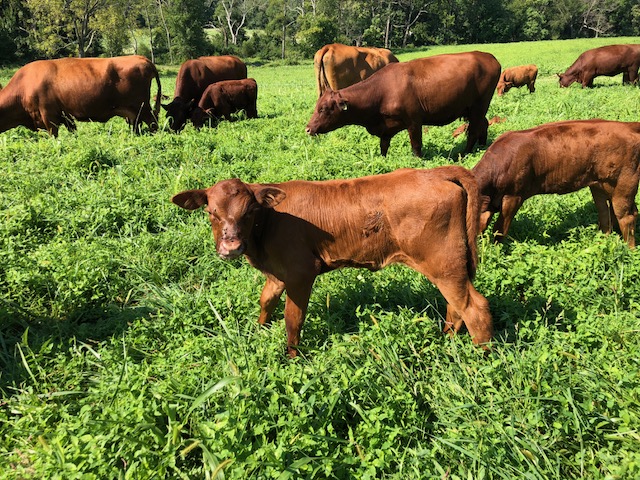
Monday, November 18, 2019 - Meat has had a rough few years. Since a shocking 2006 report found that livestock are a major contributor to climate change, there has been a nationwide - if not global - movement to eat less meat. But many experts say that the war on meat is missing the point. There is an extensive body of research suggesting that livestock should not shoulder blame for the climate crisis. In fact, these experts would argue that grazing animals are a crucial part of the solution.
a major contributor to climate change, there has been a nationwide - if not global - movement to eat less meat. But many experts say that the war on meat is missing the point. There is an extensive body of research suggesting that livestock should not shoulder blame for the climate crisis. In fact, these experts would argue that grazing animals are a crucial part of the solution.
Nicolette Hahn Niman, author of the book Defending Beef says, “The current methods of meat production are absolutely unacceptable from an environmental and animal welfare standpoint, but that doesn’t logically lead us to the conclusion that we should get rid of meat. The conversation tends to miss this basic point: It’s not whether or not we have animals, it’s how they’re managed.”
Niman’s book explains in great scientific detail how, through proper management systems, livestock have the potential to positively impact - even reverse - the effects of climate change. The solution may be in regenerative agriculture, which includes moving livestock from feedlots - which account for 80% of the meat produced today - back to pastured grasslands, mimicking the natural ecosystems that existed long before industrial agriculture took hold.
Through a process called carbon sequestration, grazing animals help pull excess carbon from the atmosphere and bury it into the soil. Theoretically, we could sequester anywhere from 60 to 90 gigatons of carbon per year.
Integrating livestock into a regenerative agriculture system also offsets emissions from industrial agriculture practices - such as using synthetic fertilizers, agrochemicals, and gasoline-powered farm equipment, which account for 45% of agriculture’s greenhouse gas emissions - by replacing them with the natural benefits of grazing.
Through grazing, animals are constantly restoring and replenishing the land, pushing nutrition into the soil through trampling leaves and naturally fertilizing the soil with their manure. This reduces the need for some fossil fueled machinery, like tills and plows, and completely eliminates the need for synthetic fertilizers, which in addition to emitting methane and nitrogen in the field, require fossil fuels to be produced. Rebuilding natural ecosystems also enacts some controls on pests and weeds, eliminating the need for agrochemicals.
It’s a lot easier to farm with chemicals, and it especially was when we had no idea about the detrimental effects on the soil. These once-innovative farming tools are now destroying our ecosystems.
Large-scale industrial farming has led to a vast decrease in soil organic matter, the nutritious topsoil that feeds plants and grasses and supports deep root systems that trap rainwater in addition to carbon. Integrating livestock into a farming system can rebuild soil organic matter at a rate of 0.1% per year. While that may sound small, a mere 0.1% increase in organic matter increases the soil’s ability to hold water by 2,000 gallons per acre, while sequestering an additional 3.6 metric tons of atmospheric carbon.
We don’t necessarily need to stop eating meat, but we do need to seek out high-quality meat from regenerative producers —look for terms like “pasture-raised,” “pastured,” “grass-fed,” and “free-range.”
And while avoiding factory-farmed meat is a good thing, it’s important to remember that vegan meat substitutes can carry a similarly hefty carbon footprint.
Learn More at this Link